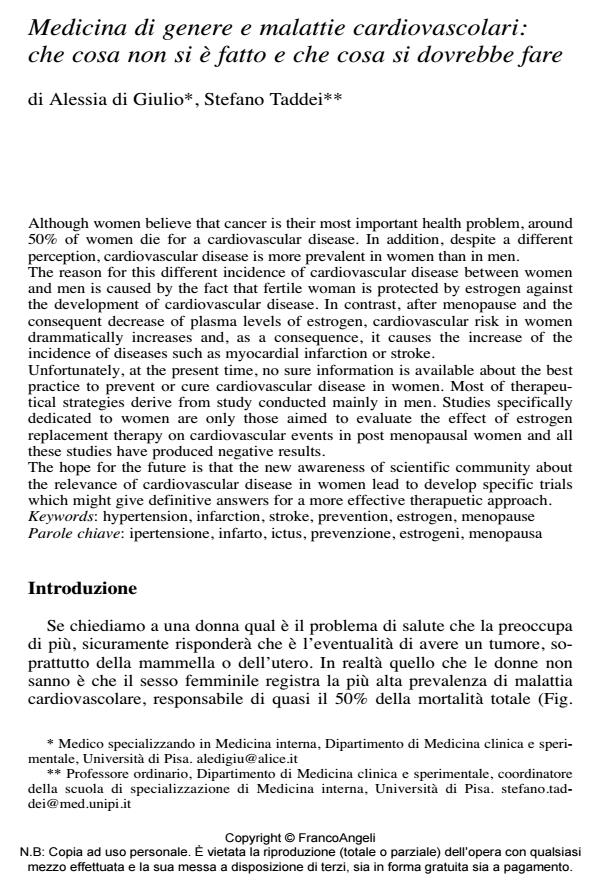Medicina di genere e malattie cardiovascolari: che cosa non si è fatto e che cosa si dovrebbe fare
Titolo Rivista SALUTE E SOCIETÀ
Autori/Curatori Alessia di Giulio, Stefano Taddei
Anno di pubblicazione 2014 Fascicolo 2014/1
Lingua Italiano Numero pagine 14 P. 44-57 Dimensione file 696 KB
DOI 10.3280/SES2014-001005
Il DOI è il codice a barre della proprietà intellettuale: per saperne di più
clicca qui
Qui sotto puoi vedere in anteprima la prima pagina di questo articolo.
Se questo articolo ti interessa, lo puoi acquistare (e scaricare in formato pdf) seguendo le facili indicazioni per acquistare il download credit. Acquista Download Credits per scaricare questo Articolo in formato PDF

FrancoAngeli è membro della Publishers International Linking Association, Inc (PILA)associazione indipendente e non profit per facilitare (attraverso i servizi tecnologici implementati da CrossRef.org) l’accesso degli studiosi ai contenuti digitali nelle pubblicazioni professionali e scientifiche
Although women believe that cancer is their most important health problem, around 50% of women die for a cardiovascular disease. In addition, despite a different perception, cardiovascular disease is more prevalent in women than in men. The reason for this different incidence of cardiovascular disease between women and men is caused by the fact that fertile woman is protected by estrogen against the development of cardiovascular disease. In contrast, after menopause and the consequent decrease of plasma levels of estrogen, cardiovascular risk in women drammatically increases and, as a consequence, it causes the increase of the incidence of diseases such as myocardial infarction or stroke. Unfortunately, at the present time, no sure information is available about the best practice to prevent or cure cardiovascular disease in women. Most of therapeutical strategies derive from study conducted mainly in men. Studies specifically dedicated to women are only those aimed to evaluate the effect of estrogen replacement therapy on cardiovascular events in post menopausal women and all these studies have produced negative results. The hope for the future is that the new awareness of scientific community about the relevance of cardiovascular disease in women lead to develop specific trials which might give definitive answers for a more effective therapuetic approach.
Parole chiave:Ipertensione, infarto, ictus, prevenzione, estrogeni, menopausa
Alessia di Giulio, Stefano Taddei, Medicina di genere e malattie cardiovascolari: che cosa non si è fatto e che cosa si dovrebbe fare in "SALUTE E SOCIETÀ" 1/2014, pp 44-57, DOI: 10.3280/SES2014-001005